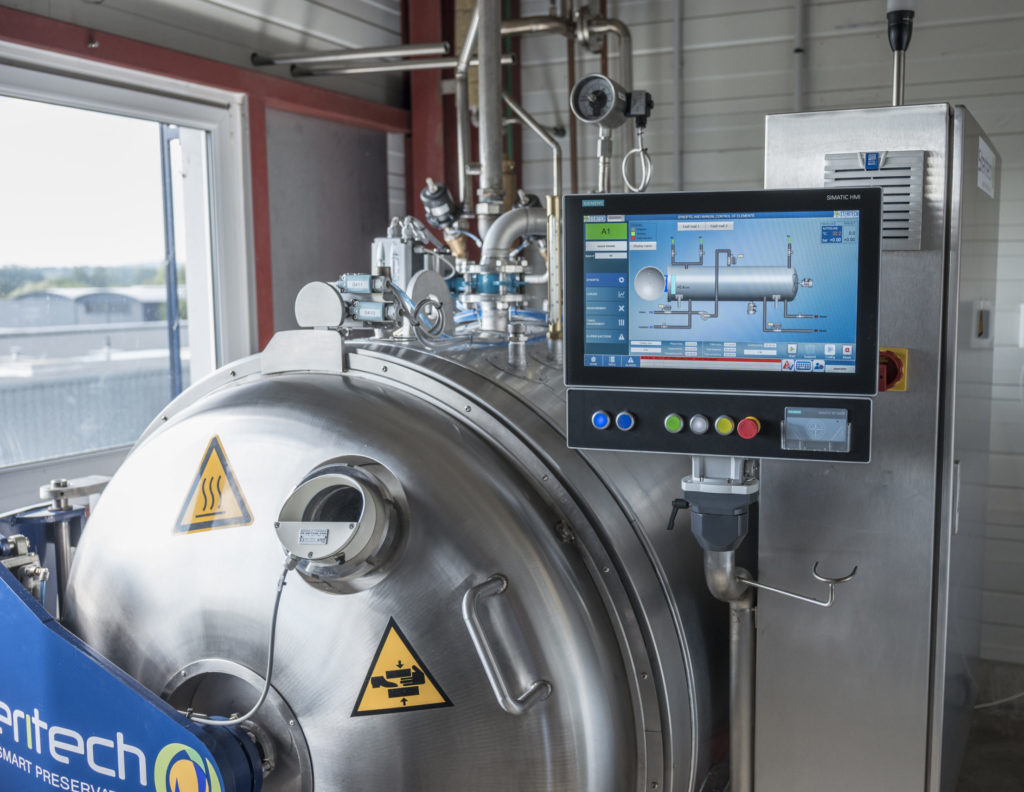How does sterilization by autoclave work ?

How does sterilization by autoclave work?
Food preservation has always been a concern for mankind. The need to sterilize products has become increasingly important with the discovery of pathogenic bacteria and micro-organisms. It is particularly important in the food industry. This is why heat treatment equipment, such as the autoclave, has been developed. So, how does sterilization by autoclave work? Find out all you need to know about the sterilization process.
The process of industrial sterilization in an autoclave
The principle of the autoclave was invented in 1679 by Denis Papin. However, it was Nicolas Appert who perfected the process of sterilizing canned food at the end of the 18th century. In 1795, Appert developed the process of “appetizing” food, sixty years before Louis Pasteur and pasteurization.
Brief description of industrial autoclave equipment and devices
Autoclaves consist of a sterilization chamber with a lid. Made of stainless steel, they come in different sizes to suit the products to be sterilized. Autoclaves are equipped with temperature and pressure control instruments. The industrial version of the electric sterilizer is subject to pressure device regulation. It is therefore fitted with safety devices that are subject to periodic checks.
The industrial autoclave sterilization process
Different types of sterilizing agent are used for autoclave sterilization.
- water: in spray, trickle or immersion process;
- steam: in air/steam process;
- saturated steam.
Temperatures and pressure may vary depending on the type of autoclave. For instance, in a saturated steam process, pressure is determined by temperature. For better package preservation, temperature and pressure can be dissociated.
The different phases of autoclave sterilization
Sterilization in an autoclave follows a rigorous process. 5 phases are required for autoclave conditioning and the sterilization cycle.
- Phase 1 (only for steam autoclaves): the purging phase. This evacuates the air from the autoclave, leaving only steam in the chamber.
- Phase 2: the preheating phase, which increases the temperature of the autoclave. During this phase, energy requirements are high. The entire chamber must be heated, especially the stainless steel. The increase in temperature is associated with an increase in pressure.
- Phase 3: the sterilization phase. This is the most important and critical phase of heat treatment. Compliance with the time/temperature pairing is mandatory. Time is programmed according to the product’s sterilizing value.
- Phase 4: the cooling phase. This lowers the temperature and pressure of the autoclave. It then helps to lower the temperature of the products.
- Phase 5: the water evacuation phase. The water is evacuated from the autoclave. The remaining air is expelled in order to return to atmospheric pressure.
The different types of autoclave for sterilization
There are four main industrial autoclaves used for food sterilization. Find out more about the different types of industrial autoclaves and how they are used for sterilization.
Steam-air autoclave process for sterilization
This type of autoclave uses a mixture of air and steam. This mixture carries out sterilization, and the packaging can be preserved. This autoclave operates with short cycles, which saves energy. It is highly recommended for processing flexible packaging used in the pharmaceutical industry.
The water spray process autoclave for sterilization
This type of autoclave sprays pressurized water onto the products to be sterilized. Depending on the sterilization cycle, the water is heated by steam. It then undergoes cooling via an exchanger. This type of autoclave is fairly economical, since it recycles water during the cycle. Heat is optimally distributed throughout the unit.
Product sterilization by bi-process autoclave
As the name suggests, this type of autoclave combines the advantages of the two other systems : air/steam and water spray. The heat is homogeneous inside the vessel, and evenly distributed. The temperature rise and fall phases are faster. Perfect for large-capacity autoclaves.
The immersion autoclave for sterilizing your products
Immersion sterilization is an old and well-know sterilization process. In this type of autoclave, the products to be sterilized are covered with superheated water. The temperature and pressure of the water increase according to the dedicated cycle. The water used during the cycle is not wasted, it can be recycled for the next product.
Regulations on autoclaves and steam pressure equipment
Industrial autoclaves and steam equipment must comply numerous standards, including the CE standard. Other regulations must be met on a case-by-case basis: FDA, AME or even G MPA. This type of equipment and devices is subject to periodic inspections by certified organisations.
If you need an autoclave for your workshop, take a look at our range of professional autoclaves. You will find the perfect autoclave adapted to your needs on our website. At Steritech, we try to reduce waste. That is why we offer you a retrofit service. This service not only extends the life of your equipment and instruments, but it also improves the autoclave performance. Don’t hesitate to contact us by email if you have any questions.